Chapter 3 Diversity In Living Organisms Long Answer Type Question And Answers
Question 1. Thallophyta, Bryophyta and Pteridophyta are known as ‘Cryptogams’. Gymnosperms and angiosperms are called ‘phanerogams’. Discuss why?
Answer.
Thallophyta, Bryophyta and Pteridophyta are known as ‘Cryptogams’. Gymnosperms and angiosperms are called ‘phanerogams’.
Thallophyta, Bryophyta and Pteridophyta are called ‘Cryptogams’ because the reproductive organs of these groups are inconspicuous or hidden. Seeds are absent. On the other hand, ‘Phanerogams’ include gymnosperms and angiosperms which have well-differentiated reproductive tissue and the embryo with stored food. Embryo develops into seed
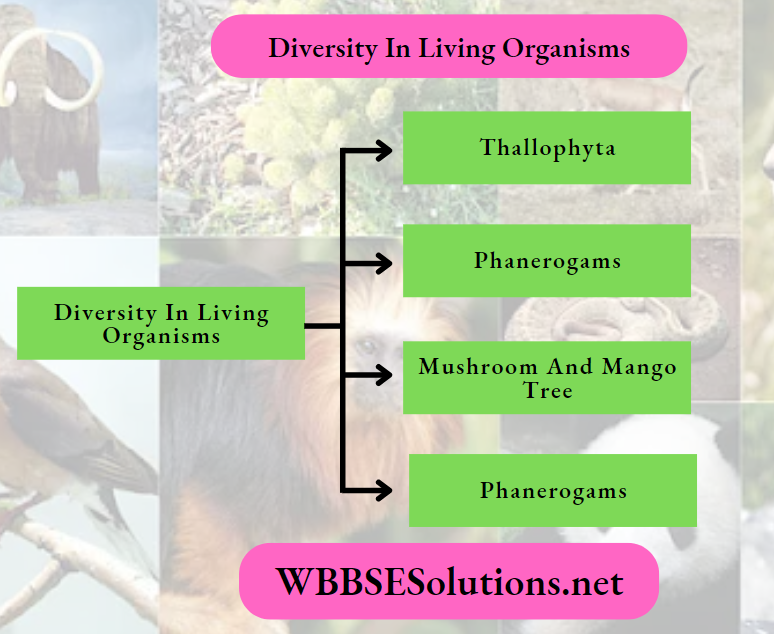
Question 2. Which organism is more complex and evolved among bacteria, mushroom and mango tree. Give reasons.
Answer.
Mango tree is more complex and evolved because it is eukaryotic, autotrophic, terrestrial sporophyte with covered seed. The bacteria is unicellular prokaryote and fungi are heterotrophic, simple thallophyte with no tissue system
Read and Learn More NEET Foundation Long Answer Questions
Question 3. Discuss the characteristics features between pteridophytes and spermatophytes.
Answer.
Differences between Pteridophytes and Phanerogams (Spermatophytes):
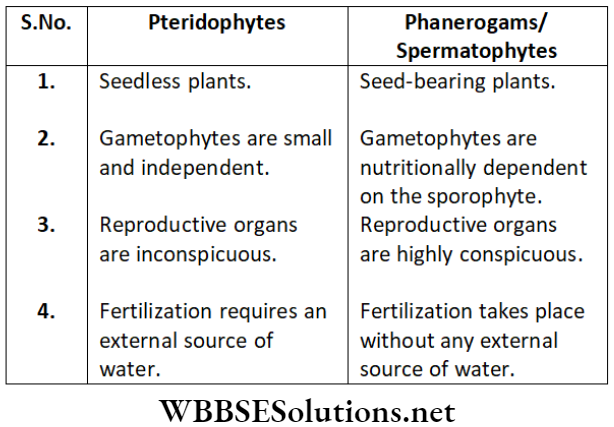
Question 4. List out some common features in cat,rat and bat.
Answer.
common features in cat,rat and bat:
Bat, rat and cat belongs to the class Mammalia and have the following common features.
- All have notochord at some stage of life cycle.
- All are warm blooded.
- All have four-chambered heart.
- All have skin covered with hair and with sweat and oil glands.
Question 5. Give the characteristics features of five-kingdom classification.
Answer.
The characteristics features of five-kingdom classification:
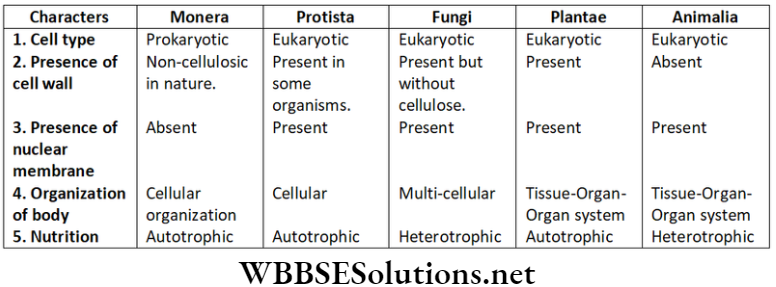
Question 6. Draw the flowchart to understand the plant classification.
Answer.
The flowchart to understand the plant classification:
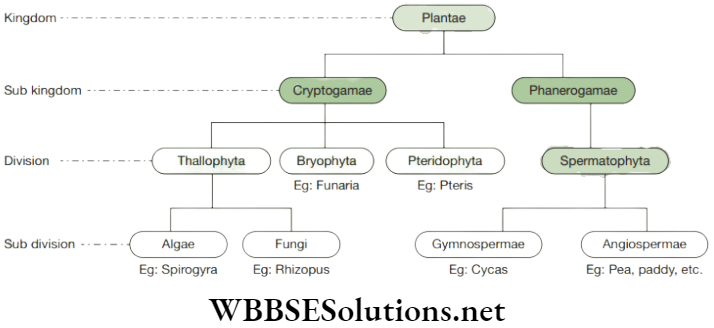
Question 7. Describe the features of chordates and non-chordates and how they are different from each other.
Answer.
Differences between Non-chordates and Chordates:
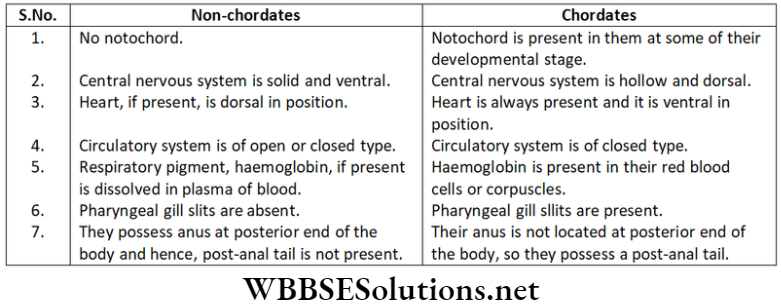
Question 8. Discuss how phylum Porifera and Coelenterata are different from each other.
Answer:
Difference between phylum Porifera and Coelenterata:
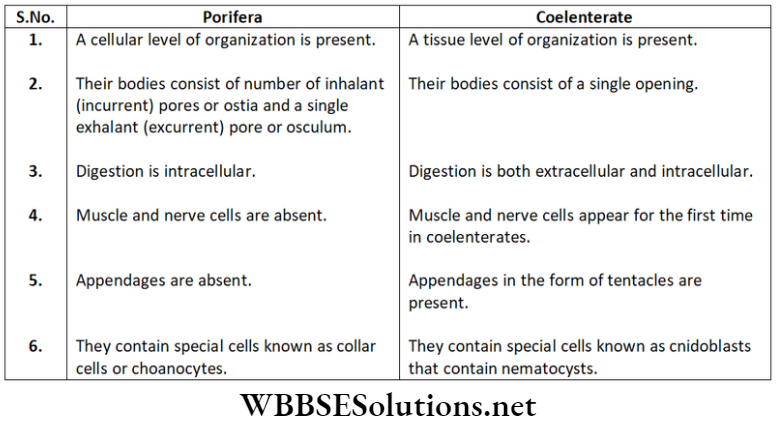
Question 9. Explain how animals in Vertebrata are classified into further subgroups.
Answer:
Vertebrata is divided into two superclasses, namely Pisces and Tetrapoda. Animals of Pisces have streamlined body with fins and tails to assist in swimming. Animals of Tetrapoda have four limbs for locomotion.
Tetrapoda is further classified into the following classes.
- Arnphibia: It is adapted to live in water and on land. Can breathe oxygen through skin when under water.
- Reptilia: These are crawling animals. Skin is hard to withstand extreme temperatures.
- Ves: Forelimbs are modified into wings to assist in flying. Beaks are present. Body is covered with feathers.
- Mammalia: Mammary glands are present to nurture young ones. Skin is covered with hair. Most of the animals are viviparous.
Question 10. Describe how phylum annelids and arthropods are different from each other.
Answer:
Difference between Phylum annelids and Arthropods:
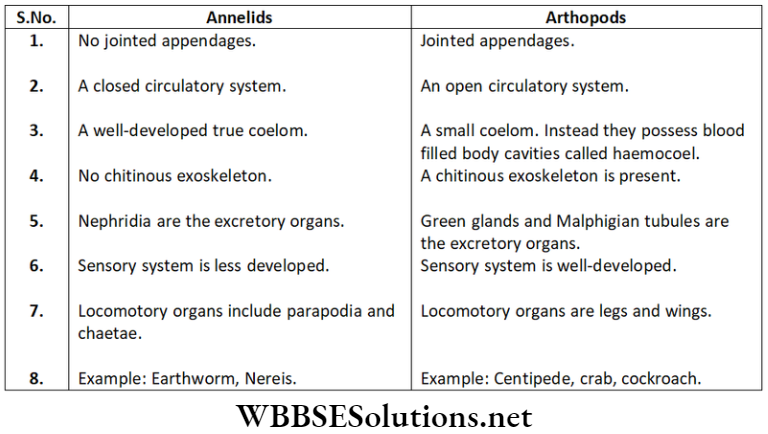
Question 11. How would you choose between two characteristics to be used for developing a hierarchy in classification?
Answer:
The gross character will form the basis of the start of the hierarchy and the fine character will form the basis of further steps of a single hierarchy.
Example:
- The presence of vertebral column in human beings can be taken under Vertebrata.
- The presence of four limbs makes them members of Tetrapoda.
- The presence of mammary glands keeps them under Mammalia.
Question 12. Discuss the characteristics and features between Aves and Mammals.
Answer:
The characteristics features between Aves and Mammals.
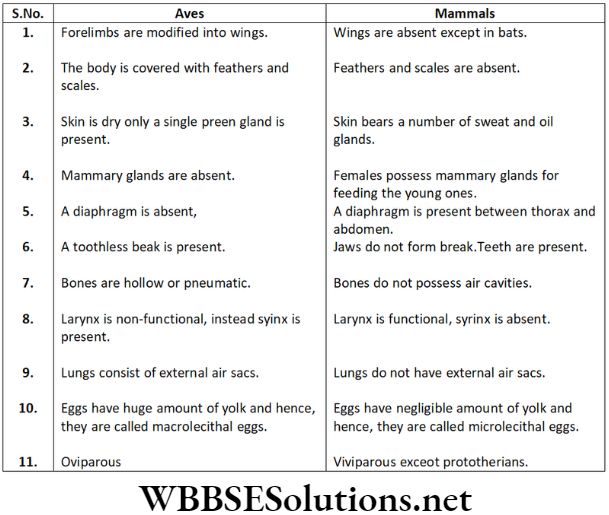
Question 13. What is notochord?
Answer:
Notochord:
Notochord is a primitive kind of endoskeleton that is present in all chordates at some stage of life cycle. Notochord gives longitudinal stiffening to the main body axis, a base for trunk muscles and an axis around which the vertebral column develops.

